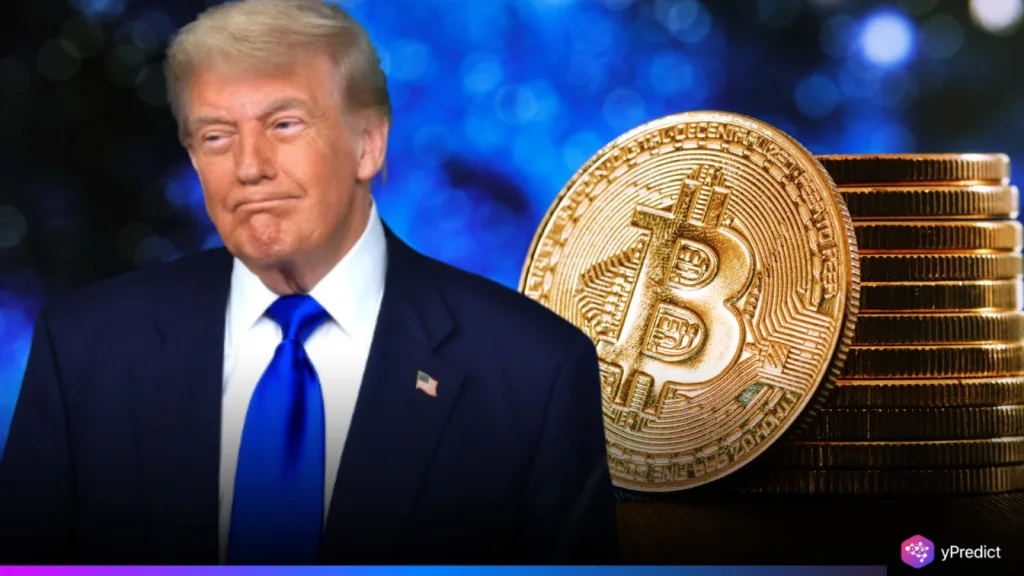
According to reports, the Trump administration is developing an executive order that would allow 401(k) retirement plans to contain cryptocurrencies and other alternative assets. This would change substantially from the restrictions enforced under the Biden administration, and would be indicative of a larger trend of allowing digital assets to play more of a role in mainstream financial planning. The executive order appears to have much similarity to an initiative launched by the administration’s crypto working group in January 2025, aimed specifically at the regulation of digital assets and a potential national crypto reserve.
Additionally, the executive order comes at a time when both private firms and investors are feeling pressure to diversify their retirement portfolios with possible high-growth opportunities in crypto. While this could open access to wealth through digital assets, it does open questions related to market stability, investor protection, and other regulatory concerns.
Trump Order Reverses Biden-Era Crypto Restrictions
The Trump executive order directly contradicts a 2022 guidance produced under the Biden administration, which recommended caution when considering the inclusion of crypto in retirement account offerings. The Biden administration guidance, which was supported by the Labor Department, provided disincentives to plan sponsors due to concerns about volatility and non-transparent regulation in the practice of offering digital assets via retirement accounts.
In July 2025, Kiplinger reported that the Labor Department had secretly rescinded these rules, clearing the way for this executive action. The order seeks to provide crypto retirement options and appeal to a section of the population that has adopted digital-first strategies and veered away from traditional finance options.
A Booming Crypto Market Fuels Policy Momentum
Driving this policy competitive stress is a growing 1.5 trillion crypto market, according to CoinMarketCap as of August 2021. Understandably, the size and movement of this market challenge financial regulators and regulators. Companies like MicroStrategy report 20% returns from holding Bitcoin for the long run, and that there is upside potential to crypto when properly managed.
The departure point for the Trump administration’s fiduciary conditioning toward crypto and 401(k) retirement plans appears reflective of crypto’s maturity in the market. As Bitcoin, Ethereum and stablecoins establish themselves as long-term” store of value” assets, it is not unreasonable to surmise that retirement accounts will not look the same as they did before. The interest in establishing 401(k) plans that offer crypto-interest is on the climb and, on some level, that shift is less like the independent action of a company than the inevitable adoption of assets that are welcomed by pro-crypto lawmakers.
Volatility and Oversight Remain Key Concerns
Despite industry excitement and hype, risks still lurk. A 2019 National Bureau of Economic Research (NBER) study concluded that private equity and hedge fund investments—both categorized as alternative assets—seemed to generate a respectable 10–12 % annual return along with significant drawdowns. However, crypto is infinitely more volatile, perhaps possessing the same, if not higher, risk.
The Trump order, while extreme, at least provided some clarity on oversight. Regardless of one’s current feelings about cryptocurrency, the momentum behind this shift reflects a larger movement: investors now reject any notion of crypto as a fringe investment. Risk management tools leveraging artificial intelligence (AI) and blockchain analytics are increasingly gaining traction for creating proposals and reports for clients. Potential end-users now have increased investor confidence by being able to visualize internal price action and volatility better than they could previously.
Toward a Digitally Diversified Future
The Trump order represents a change in financial strategy by the United States, with a clear acceptance of both innovation and risk. Whether this adjustment will become sustainable in light of regulation will depend largely on the interaction and ultimate balance between the regulators looking to protect investors and the platforms looking to generate returns. For now, the Trump administration has been clear: digital assets belong in the conversation about what the future of retirement will look like, and perhaps in the center of that discussion.






